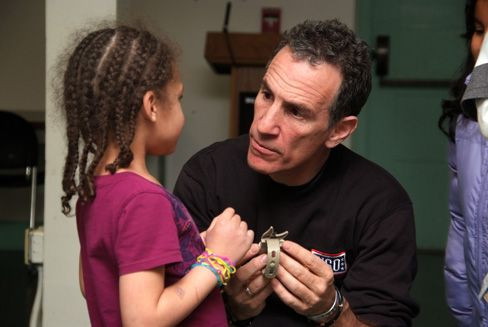Teaching Your Child To Talk Just Got Easier: Visual Cues Found To Aid Language Acquisition By 22%

Children's vocabularies are established long before they start school. While many parents may just be glad that their tots are talking at all, a new study has found that non-verbal cues about words can boost a child's vocabulary by nearly 22 percent.
The difference here lies in experiences that a baby has with language. If a child sees a picture of an object or the actual object, he or she will better realize the significance and meaning of a word. Children may not repeat what parents say to them right away, but having a visual cue will cement into their minds what a certain image is in words. Kathy Hirsh-Pasek, Ph.D., a director of the Temple University Infant Laboratory in Ambler, Pa., said on Parenting.com, "From day one, babies are hearing information, so they can later compute the frequencies of what they hear and figure out how words and phrases and sentences fit together."
"They're constantly constructing how language works," she added.
However, the researchers wondered if socioeconomic status could have an effect on the types of experiences children had. Parents with higher socioeconomic status, according to a previous study, typically talk more to their children and accordingly boost their vocabularies. This study, on the other hand, showed that the experiences that impacted language acquisition, or high-quality learning situations, were similar among parents of both low and high socioeconomic status. Similarly, it illustrated that with the use of visual cues to help associate words with objects, children learned those words more readily, despite socioeconomic status.
In the study, 50 parents of children 14 to 18 months old provided visual cues while they spoke to their children between five and 38 percent of the time over 90 minutes. The idea here was to present the children with opportunities to learn new words, and measure if they did or did not learn based on how the words were presented. The researchers explained, "Parents who talk more are, by definition, offering their children more words, and the more words a child hears, the more likely it will be for that child to hear a particular word in a high-quality learning situation. That is, sheer parental talkativeness increases the likelihood that a child will encounter high-quality learning instances for particular words during natural parent-child conversational exchanges."
The results indicated that children who had received the most visually-supported language from their parents were more able to figure words out for presented objects at three years of age. This is likely because they learned how to read context clues and developed identification skills from an early age when they received visual cues from parents and experiences offered to them.
How can parents get their children to acquire more language skills?
Various doctors on Parenting.com have provided advice to get children to acquire the most language by the age of three, which is when children are most susceptible to learning new words.
-Narrating daily routines
-Turning off the television and having more face-to-face interactions with children
-Asking children open-ended questions and responding to them to keep them engaged
Father and writer for the site, Matt Villano, commented, "In most cases, these steps should lead to (lots of) talking. And as a parent who has worried about his child's language acquisition from the very beginning, I can attest: Silence is totally overrated."
Source: Cartmill E, Goldin-Meadow S, Gleitman L, Trueswell J, Armstrong B, Medina T. Quality of early parent input predicts child vocabulary 3 years later. PNAS. 2013.



























